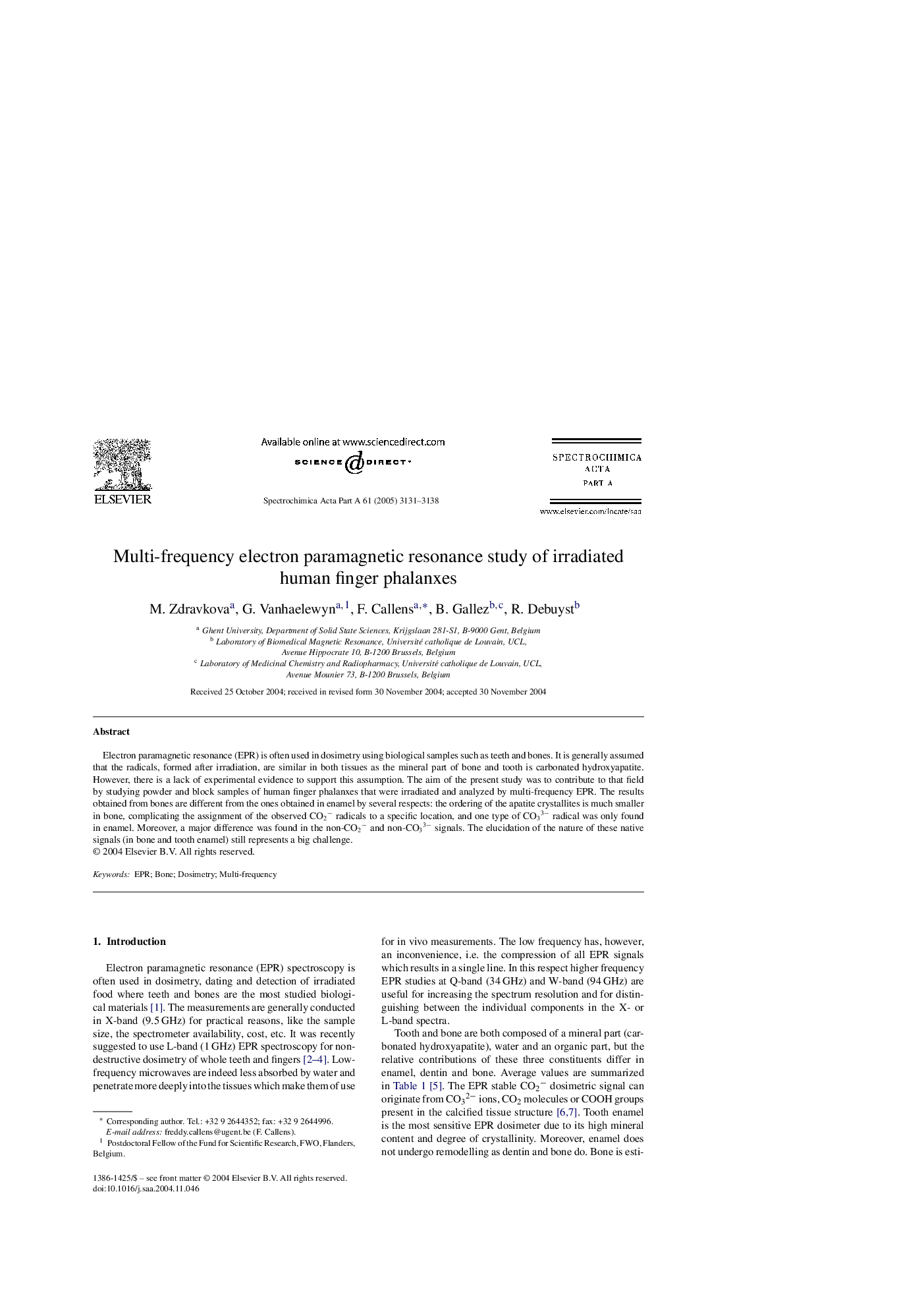| Article ID | Journal | Published Year | Pages | File Type |
|---|---|---|---|---|
| 1237020 | Spectrochimica Acta Part A: Molecular and Biomolecular Spectroscopy | 2005 | 8 Pages |
Abstract
Electron paramagnetic resonance (EPR) is often used in dosimetry using biological samples such as teeth and bones. It is generally assumed that the radicals, formed after irradiation, are similar in both tissues as the mineral part of bone and tooth is carbonated hydroxyapatite. However, there is a lack of experimental evidence to support this assumption. The aim of the present study was to contribute to that field by studying powder and block samples of human finger phalanxes that were irradiated and analyzed by multi-frequency EPR. The results obtained from bones are different from the ones obtained in enamel by several respects: the ordering of the apatite crystallites is much smaller in bone, complicating the assignment of the observed CO2â radicals to a specific location, and one type of CO33â radical was only found in enamel. Moreover, a major difference was found in the non-CO2â and non-CO33â signals. The elucidation of the nature of these native signals (in bone and tooth enamel) still represents a big challenge.
Keywords
Related Topics
Physical Sciences and Engineering
Chemistry
Analytical Chemistry
Authors
M. Zdravkova, G. Vanhaelewyn, F. Callens, B. Gallez, R. Debuyst,
